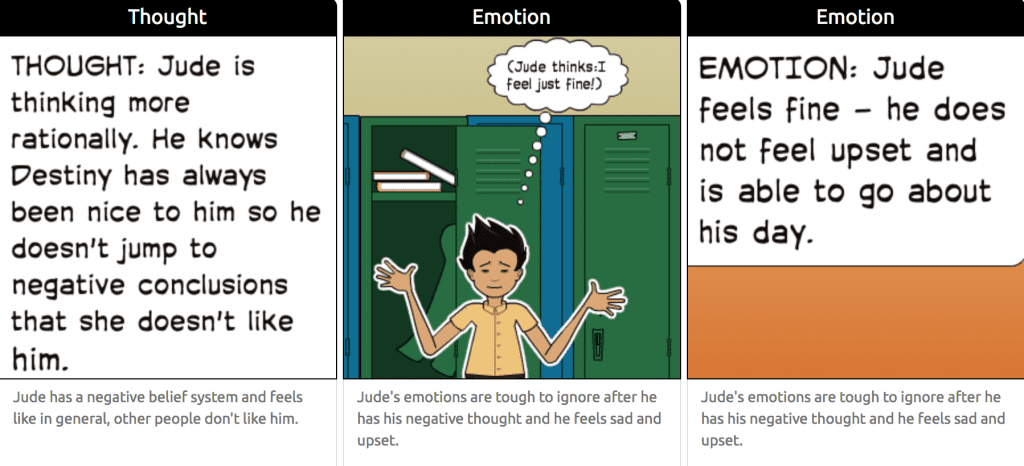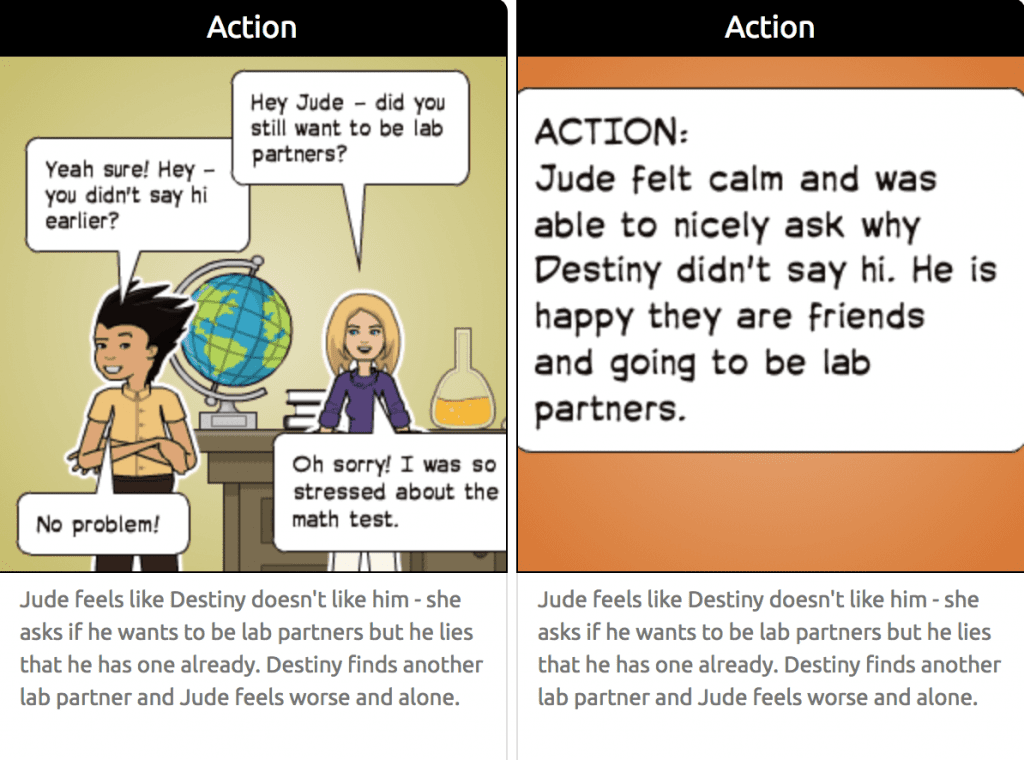
Being and Becoming
November 7, 2016 in Be Positive
“Life is not a having and a getting, but a being and a becoming.”
-Matthew Arnold

Photo Credit: Brian Digital via Compfight cc
What does this quote mean to you?

November 7, 2016 in Be Positive

Photo Credit: Brian Digital via Compfight cc
What does this quote mean to you?

November 4, 2016 in LINKS
Photo Credit: A Health Blog via Compfight cc
Active Minds is an organization dedicated to raising awareness about mental illness. There are over 400 chapters located at many colleges in most states of the US, and Canada and Puerto Rico. If you are in or off to college, click here to find a chapter near you.
Here is a video about how active minds started:
Let us know if you checked out the site and what you thought.

November 1, 2016 in Educate Yourself
When you feel depressed or anxious, it can feel like you are just lost in your thoughts. A type of therapy called cognitive behavioral therapy (CBT) helps to teach you how to change your thoughts. The idea is that by changing your thoughts, you can change your mood and how you deal with day-to-day events. CBT is one of the most effective therapies for depression and anxiety in young people.
Out of all of these responses, the easiest to change in the cycle are the Thoughts, because they can come from an underlying belief system: one example of such an underlying belief system is, “I’m not good at anything.” This belief system is overly negative. CBT helps train you to think more rationally by using evidence, rather than feelings or beliefs.
Like in this comic strip:
After reading this, imagine that Jude talks to his doctor and realizes he has been feeling depressed. He starts seeing a therapist who teaches him about CBT. Jude realizes there is evidence that some people do like him and there are some people he doesn’t get along with as well.
After CBT, the same scenario might happen a little like this:



How did Jude manage to change his thinking? What are the differences between the two comic strips? Let us know your thoughts below!

October 28, 2016 in LINKS
You might have heard that taking a pause in the day to recenter yourself and let yourself just be without judgment can be a way to de-stress. There is a website that can turn your computer or phone into a relaxation zone. Check out this beautiful website: calm.com or download the app.
If you tried it, let us know what you thought about it below!

October 27, 2016 in Social Media Guide
Maybe you’ve already noticed that some folks have images beside their nicknames here on the SOVA website. We want everyone to be able to have a photo there! Remember something that will not identify who you are because of the continental nature of our study!
On the left hand side of this page there is a box that says:
 “UPDATE YOUR PROFILE AND CHECK OUT OTHER MEMBERS HERE!”
“UPDATE YOUR PROFILE AND CHECK OUT OTHER MEMBERS HERE!”
Below that it says: Update Your Profile (or you can just click this link!)
Now you can just upload a picture to the avatar section!
Having a personalized space is great on social media, because you can craft an image of yourself. Sometimes people make their life seem perfect on facebook, twitter, or instagram, but it’s important to remember that…
What do you think about the way people portray themselves on social media? Tell us about it in the comments!

October 26, 2016 in Educate Yourself
Sometimes we share with folks our struggles and pain. In response, sometimes we get the shoulder we need to cry on, sometimes we get the understanding nod, sometimes we get the dreaded statements that start with “At least…”
Having feelings downplayed or dismissed can be a crushing feeling. Oftentimes, people don’t even realize that they’re doing it or grasp the impact it can have.
Here is a short and sweet animation about the difference between “sympathy” and “empathy.” It can serve as a playful yet sincere reminder for those in your social circles on how to interact with others who are sharing tough stuff.
Have you ever opened up to someone only to have them “find the silver lining?” How did you handle this situation? Did this video hit home with you?

October 21, 2016 in LINKS
If you are having a rough day, try distracting yourself by focusing your attention on something else.
Click on this link to draw a nebula like the one here:
Drawing is a tool you can use to focus your attention on something relaxing and enjoyable.
Did you try it? How did you feel before and after? Attach the image to your profile page.

October 19, 2016 in Educate Yourself
While you may know that getting treatment for depression and anxiety can help with emotional regulation, did you know that it can also greatly benefit your physical health?
The info.
In a recent research report released on August 10th, 2015, The American Heart Association says that teens with depression and anxiety are at a higher risk for heart diseases. The reason for this relationship is that teens who are suffering from depression and anxiety also suffer from other disruptions in their lives as a consequence, such as problems with sleep, appetite, and stress. Therefore, they are often more prone to obesity, high blood pressure, and unhealthy cholesterol levels. The reality is that when our minds and emotions are out of whack, our bodies also follow suit.
What can you do?
This information may be unsettling, but it is also another way to view the benefits of treatment. Seeing a therapist for depression, anxiety, or other mental illnesses can not only help you feel better, it can help you become physically healthier. When considering whether or not to seek treatment, think about your overall health now and in the long run. Another good idea is to always let your primary doctor know if you have depression or anxiety so that they can be more alert to screenings for heart related problems.
Source: Reuters Health
How do you feel about this information? Does it surprise you? Let us know below.

October 18, 2016 in Educate Yourself
College years are a big transition for everybody, so anxiety and depression are not uncommon among undergraduates. Yik Yak is an app that’s popular among college kids and it is well known for being used to anonymously spread gossip and hateful speech, as well as a means to meet up with other Yik Yak users for casual “hookups”. But recently, it has been across on college campuses as suicide intervention. People who post suicidal thoughts are met with extremely supportive responses from strangers who are reaching out to help the individual. According to this NPR article, “Yik Yak has become an unlikely safe space for people with suicidal thoughts — a place where, students say, responses are consistently helpful, not mean.”
Are you or someone you know struggling with depression, anxiety, and/or suicidal thoughts? Visit these websites to get helpful information and resources.
http://www.adaa.org/understanding-anxiety/suicide
https://www.mentalhelp.net/articles/suicide/
http://www.calmclinic.com/anxiety/symptoms/suicidal-mindset
Photo Credit: Janitors via Compfight cc
Have you heard about apps being used for good? Let us know in the comments!

October 14, 2016 in LINKS
US ReachOut is a great website to learn more about a variety of issues like anxiety, stress, and managing relationships. There are a lot of great personal stories to read, and even a discussion board to get some of your burning questions answered or read what other people have asked.
What are some other websites you like when feeling stressed or anxious? Let us know in the comments!
Recent Comments